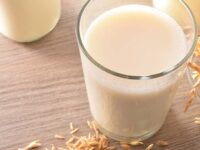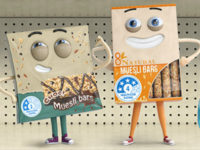 Obesity Policy Coalition (OPC) has reached out to the health ministers of the Australia New Zealand Ministerial Forum on Food Regulation, urging them to immediately adopt a recommendation to identify ‘added sugars’ on food labels when they meet on Friday.
Obesity Policy Coalition (OPC) has reached out to the health ministers of the Australia New Zealand Ministerial Forum on Food Regulation, urging them to immediately adopt a recommendation to identify ‘added sugars’ on food labels when they meet on Friday.
According to Jane Martin, executive manager of the OPC, it is critical for Australian consumers to be aware of the amount of added sugar (where sugars are added as a separate ingredient to a food product) in packaged foods, to allow them to make informed choices about the products they buy.
“On average Australian adults consume around 15 teaspoons of added sugar per day, with some teenage boys devouring 38 teaspoons a day – the World Health Organization’s strong recommendation is less than 10 per cent of energy from added sugar a day and ideally 5 per cent (6 teaspoons) for optimal health. It’s no coincidence that while our added sugar intake remains so high, our waistlines have ballooned and nearly half of our 9-10-year olds have had tooth decay,” she said.
“Clearly urgent action is required to help Australians to lower their intake of added sugars. Research has shown if consumers were able to identify added sugars on packaged foods, they could avoid up to 38.3 kg a year of added sugar by making more informed food swaps each day. However, in Australia it is currently impossible for consumers to know whether there is added sugar in the foods they buy, from reading product labels.”
OPC said while the ingredients list names sugar included in the product, added sugars can be called by more than 40 different names, a number of which consumers might not be familiar with such as maltodextrose and agave nectar, making it difficult to even identify what might be a sugar. Similarly, the nutrient information panel records the amount of total sugar in the product, but does not specify what amount is naturally occuring (for example, lactose in dairy which does not adversely impact on health) and what amount has been added by the manufacturer.
“A particularly concerning example is toddlers’ and children’s snack foods where consumers might think, based on labels, that they are choosing a healthy option but in fact are feeding their toddlers and children high-sugar foods. More than 30 per cent of toddler products in a recent survey contained added sugar in the form of fruit juice concentrate, which is high in sugar, but has none of the goodness of fruit, while the labels made claims such ‘naturally sweetened with fruit ingredients’ or ‘made with real fruit’ making them sound much healthier than they actually are,” said Martin.
“There is strong consumer desire for such added sugar labelling, with four out of five respondents to a recent survey supporting the change – it’s time to give people the information they want and need,” she added.
Labelling ‘added sugars’ appropriately was Recommendation 12 of the Labelling Logic review of Australia’s food labelling laws. The Australia New Zealand Ministerial Forum on Food Regulation is due to meet on Friday 24 November 2017.











